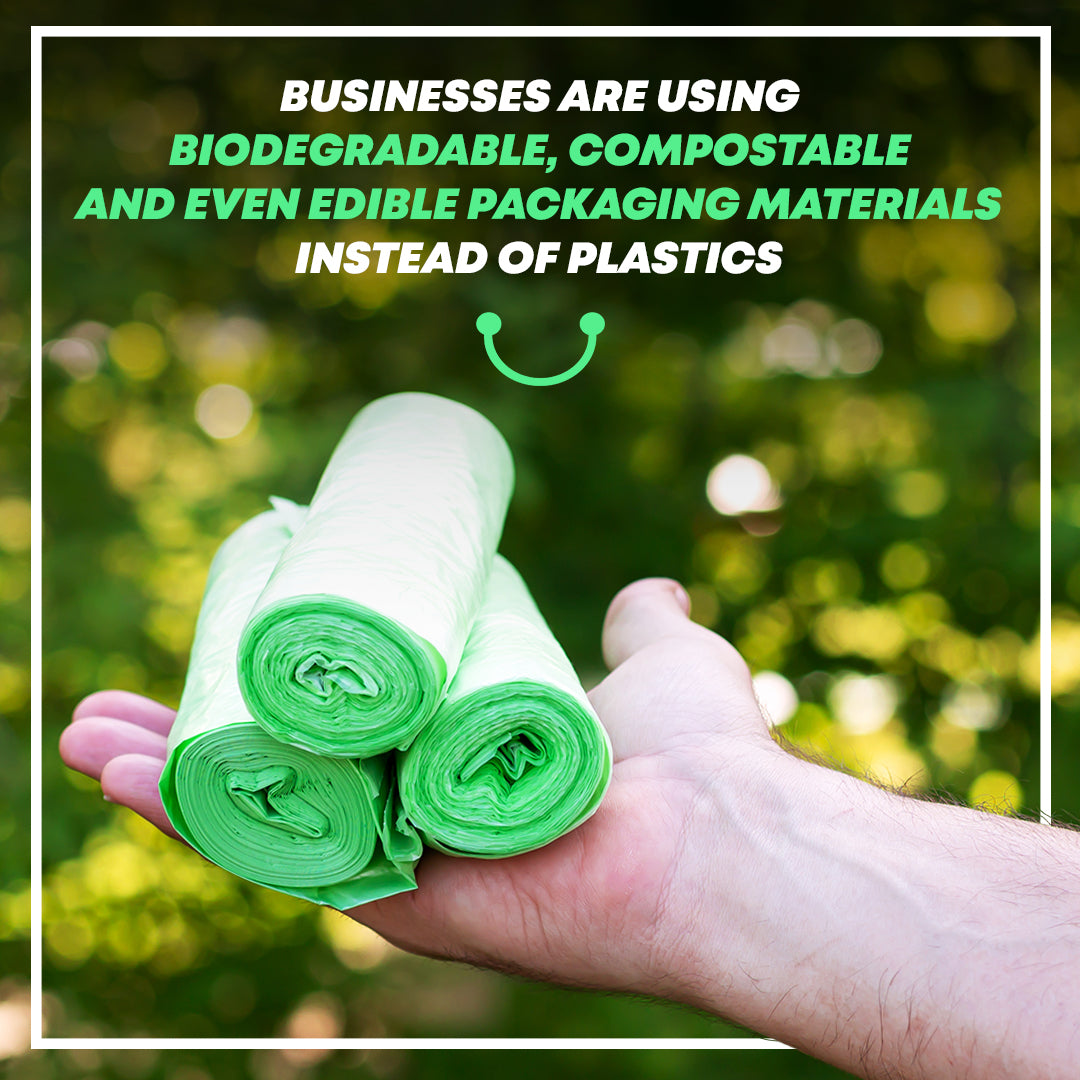
More and more businesses and companies in the food sector are nowadays frivolously searching for eco-friendly alternatives when it comes to plastic packaging. The idea here is to harshly decrease their CO2 footprint while coming up with various solutions which are mostly made from renewable materials. Statistics tell us that each year, about 8m tons of plastic end up in the world’s oceans. Moreover, experts predict that by 2050 there might be more plastic than fish in the sea. This is the reason why so many businesses have turned to biodegradable trash bags, compostable, or even edible packaging materials as opposed to plastic which is convenient for packing food, but very dangerous for the environment in the long run. Here is a detailed look at what these companies are planning to do and at the situation today.
All About These Eco-Friendly Packaging Materials
The interesting fact is that a lot of these more sustainable packaging options that certain companies have put forward have not been without controversy. For example, United Nations’ s chief scientist, Jacqueline McGlade, said about biodegradable plastics that they are a wrong option, although well-intentioned. It seems that the reason for this is their inability to break down once in the world’s oceans. As for other such plastics, like those part of the oxo-degradable category which can break down into microplastics, it is said that they can become very dangerous once they reach the water. So, the next step now is to come up with a new alternative to plastic packaging and many companies have made this their personal mission.
When we talk about environment-friendly packaging we should also take into consideration the bags that we are using to carry our food in. The fabric that these bags are made of also matters in the context of these common efforts that more and more people make to save the planet, such as wholesale compostable bags could be essential for this purpose.
Currently, there are companies that make zip-up bags and packaging for everything from vegetables to clothes, that only take three months to break down. However, there is one big problem with compostable packaging: it’s expensive. At least, it’s more expensive than plastic which is the reason why companies tend to use it for deluxe, organic or green products.
Still, this is not the sole problem when it comes to compostable bags. There is also the issue of consumer understanding and how can companies make it absolutely clear that a certain bag is indeed compostable. Some are able to do that, some are still not. And also, not all customers care about the environmental qualities of a certain packaging material and they don’t do anything differently.

Through the Eyes of the Consumer
What consumers think is extremely important in the context of this change that could greatly help our environment. This is why some studies have been conducted, like the one from Wageningen University & Research in the Netherlands, which focused on how consumers perceive this bio-based packaging. The goal was to offer businesses some ideas regarding what consumers prefer and therefore help them make the right choices.
According to researchers, it seems that most manufacturers prefer the so-called drop-in bio-based packaging. This is interesting because its chemical composition is identical to that of classic packaging. However, it doesn’t contain petroleum but renewable raw materials. As for consumers, official numbers are indicating towards a greater preference for renewable packaging than for the traditional one.
Still, the problem remains. Since these characteristics are not easily distinguishable especially by the untrained eye, manufacturers need to make efforts to clearly specify which packaging is bio-based and what are its benefits for the environment. Some of the info should include details about its bio-based content, about the renewable feedstock and the reduction of greenhouse gas emissions.
Moreover, according to one of the experts involved in the study, it seems that, contrary to what companies might think, people do notice the differences between a regular packaging material and a biodegradable one. Bio-based plastic used for packaging has a totally different feel, look, and sound. Consumers are well aware of this and, in fact, see it as a positive thing. This is another encouragement for businesses that this kind of packaging should be adopted worldwide.
Apart from this, businesses are resorting to what’s called sustainable marketing and promoting various eco-friendly products as prizes or promotional products for consumers. This is a clever way to make this phenomenon known to the mass public and encourage people to go green.
Finally, there is the problem of what to do with the package after using it. This study reached the conclusion that people want clear after-use instructions that will guide them through the correct process. Yes, these packaging materials might be biodegradable, but if consumers have no idea what to do with them, it’s all in vain. Clear claims regarding its recyclability as well as recommendations for a correct disposal should absolutely appear on the package.
For example, these bio-based drop-in plastics can be recycled together with conventional plastics. Also, compostable thrash bags is meant to be treated in special industrial composting plants. So, people should know all about these differences.

Are Biodegradable Product Compostable?
Unfortunately, the quick response is... No.
Biodegradation allows nature to take control of the process of breaking down into their component parts the packaging materials that are disposed of in landfills. On the other hand, compost bags breakdown in surroundings that are carefully managed for characteristics such as humidity, temperature, oxygen, and bacteria. These habitats are called composting environments.
This implies that all biodegradable packaging materials are also biodegradable, although compostable packaging products may not always include all biodegradable packaging materials.
Alternatives to Conventional Plastics
Apart from bio-based plastics, manufacturers are also exploring a plethora of different environment-friendly packaging options. One of the most interesting alternatives is the edible plastic film that you can wrap things in and which is made from milk protein casein. It seems that it’s capable of keeping oxygen away from foods, making this an excellent alternative to conventional plastics.
According to experts, it seems that the patent for this edible packaging option is still pending and, in the future, it might even contain micronutrients or even flavors. Right now, lots of companies are willing to adopt this type of packaging, but it might take a lot longer than they expect because such a big change is not easy to adopt.
However, people should always keep in mind that, even if these materials are biodegradable, their misplacement or littering is still not acceptable or encouraged. All of these packaging materials need to be kept in a continuously-moving system that allows their valuable resources to be taken advantage of in full.
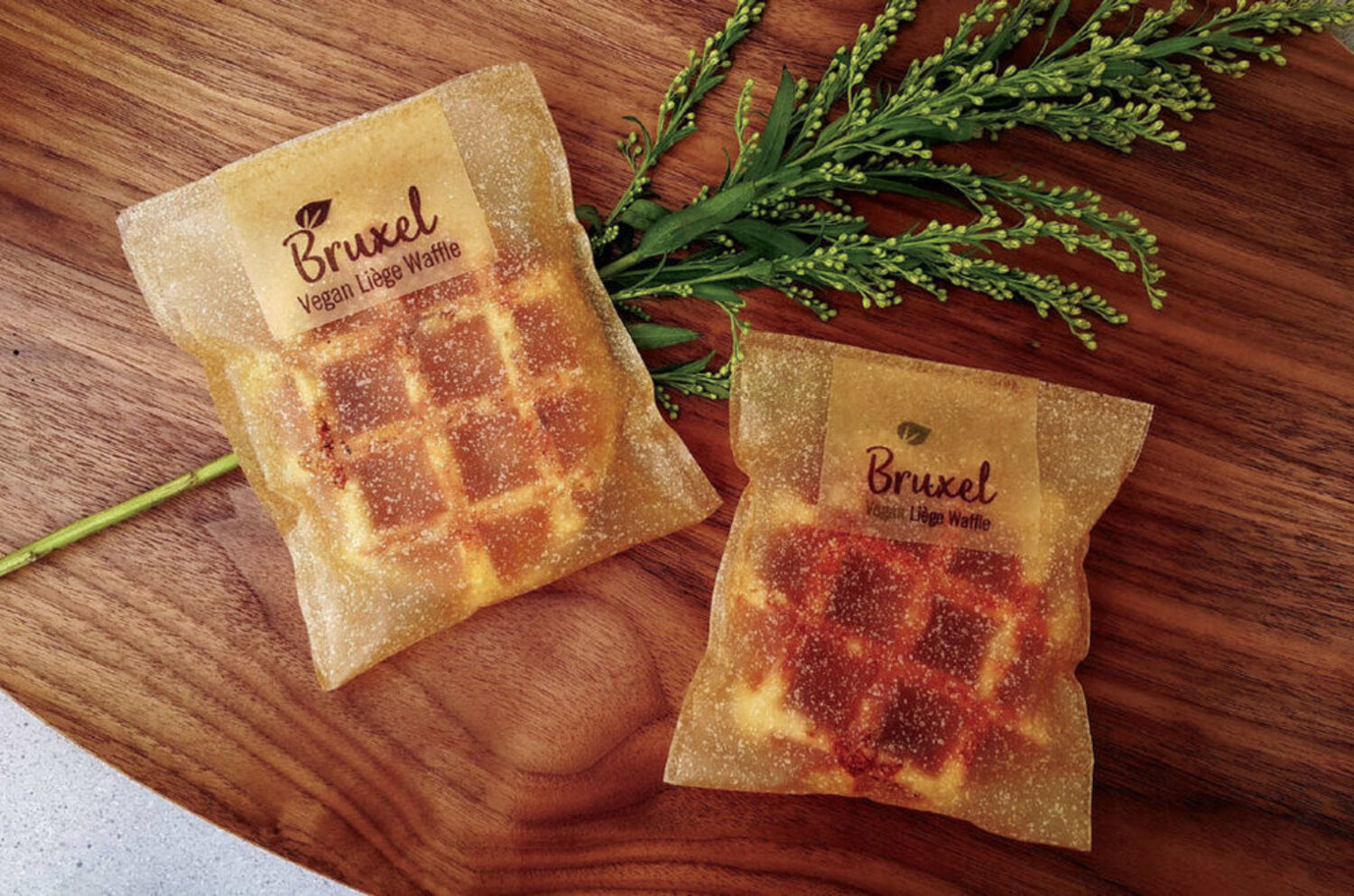
Edible Food Packaging Products
When you think about it, the concept of edible packaging might seem a little weird. Some people might find it bizarre to actually ingest something that should have the sole purpose of keeping a barrier between the food and the packaging. However, just think about ice-cream cones or the skin of fruit and vegetables. We have been eating those for a very long time, right? Nobody forces you to actually eat this packaging, but its environmental-friendly characteristic remains: it will still be compostable, biodegradable, and even dissolvable. Here are a few interesting edible food packaging products that you may or may have not heard about before.
1. Seaweed Wrapping
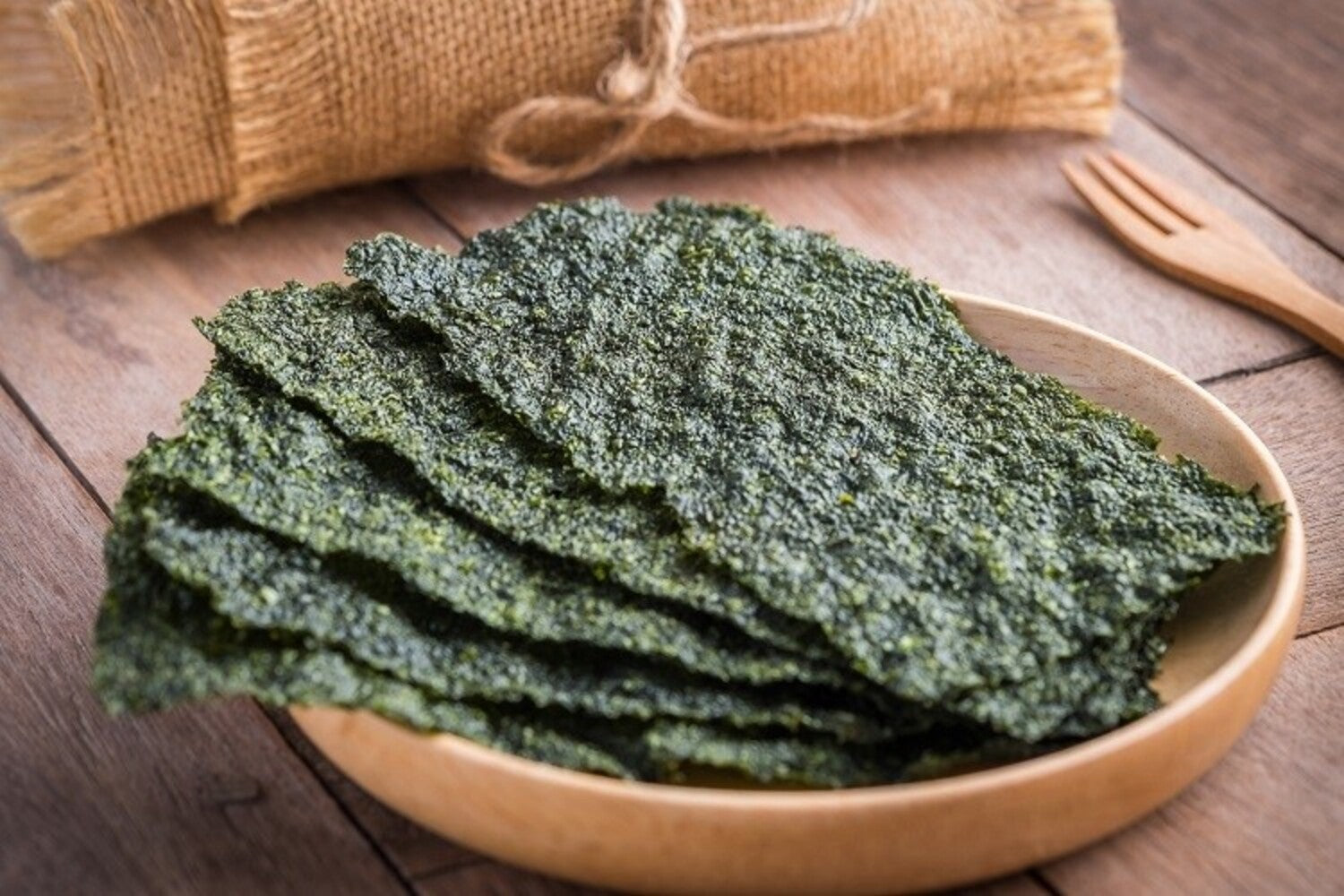
More and more manufacturers are nowadays creating edible and sustainable food packaging which is made from seaweed. In fact, this type of packaging is not only suitable for food, but it can also work well for cosmetic products, such as soap, or for coffee. The idea around this type of environmental-friendly package is that the seaweed from which it’s made of will eventually dissolve in warm water making it completely biodegradable. Moreover, it secures heat, it is printable and can be a very good plant fertilizer after use.
2. Edible Cutlery
In case you didn’t already know (and you probably didn’t), edible cutlery is now a thing and a very beneficial one for the environment, in fact. A delicious and brilliant alternative to plastic, this cutlery is made from a mix of rice, wheat, and sorghum. They come in either sweet, savory or plain flavor, are vegan and vegetarian-friendly and an incredibly good option when you truly want to do something for the planet.
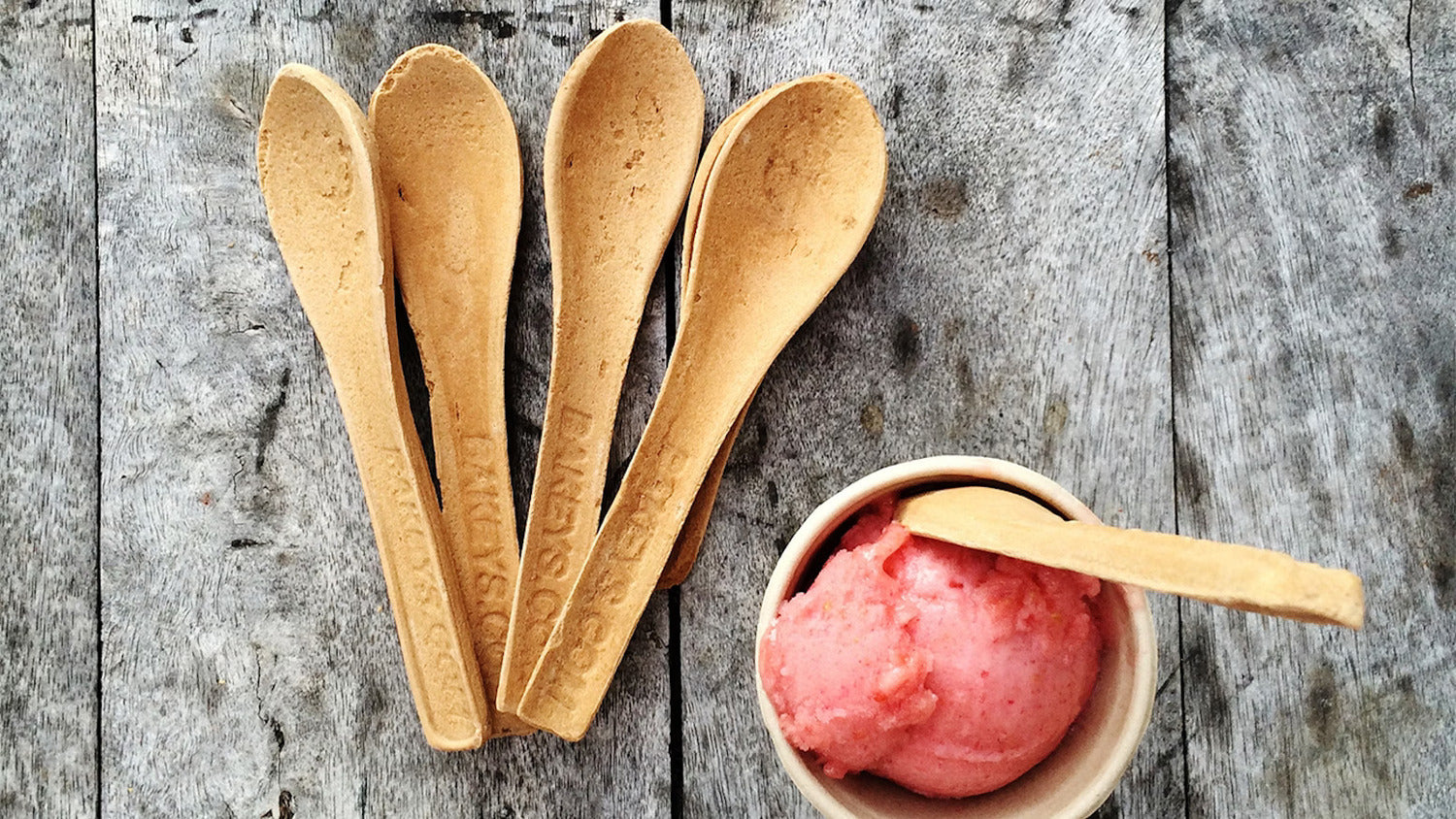
3. Edible Cups
Biodegradable and edible cups should be a must at any party from now on, especially if you want to protect the environment and encourage other people to do it too. They are, in fact, made from seaweed, natural colors that come from fruits and vegetables, and organic sweeteners. Apart from this, these cups are also gelatin- and gluten-free, and they come in a wide range of flavors, for every taste. A future project also talks about edible straws to accompany them for a fully eco-friendly night . So, bottoms up!
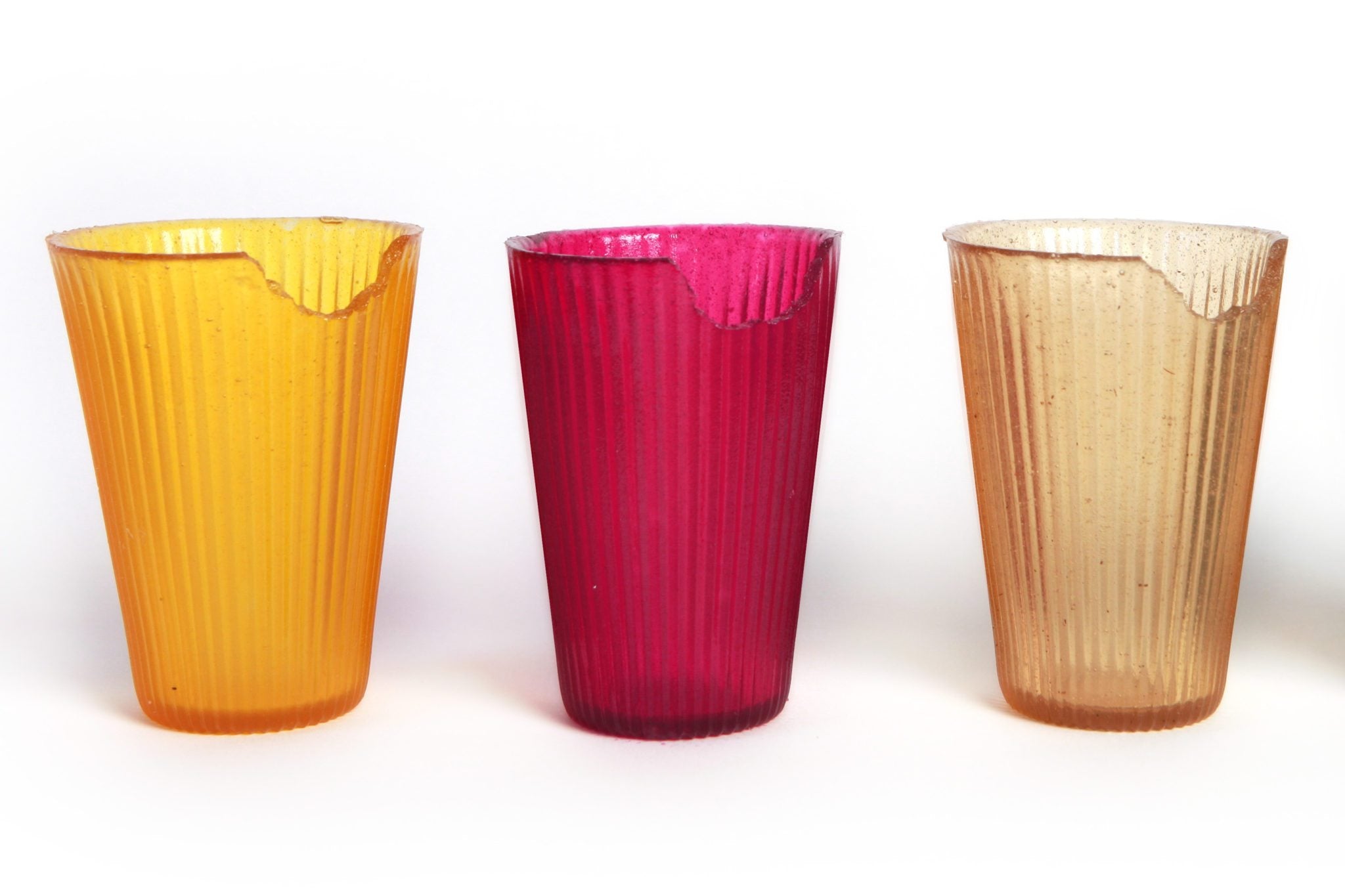
4. Biodegradable Packing Peanuts
Styrofoam packing peanuts are used as loose-fill packaging for delicate objects to absorb stress and keep them from shifting around during transport. However, polystyrene, the material most often used to make packing peanuts, is neither biodegradable nor recyclable.
A greener option are biodegradable packing peanuts. They perform similarly to styrofoam, but are produced from biodegradable ingredients like wheat starch instead. Compared to polystyrene, biodegradable packing peanuts are not only more eco-friendly but also more cost-effective.
5. Wrapping in Cornstarch
Packaging produced from cornstarch is a more environmentally friendly alternative to plastic packaging created from resources derived from petroleum.
Cornstarch packaging is totally compostable since it is manufactured using components that are sourced from the maize plant. The most significant drawback of using this packing material is that it poses a threat to the food supply of both people and animals that consume maize.
6. Packaging for Mushrooms
The combining material used in the production of mushroom packaging is mycelium, which is derived from mushroom roots. Agricultural waste is utilized in the production of mushroom packaging. It does not harm the environment and can be broken down naturally.
The usage of agricultural waste, which cannot be consumed by either people or animals, is the only component of mushroom packaging, making it a potentially superior alternative to cornstarch packaging.
7. Organic Textiles
Organic textiles might be used instead of the omnipresent plastic bags that have become an essential component of product packaging. This would have a positive impact on the environment.
Fabrics labeled as organic are those that are crafted using organic resources, such as hemp, palm leaves, recycled cotton, pineapple leaves, banana, tapioca, and many more. All of these basic materials are readily available, and the packaging that is created from them decomposes very quickly – typically within one hundred days.
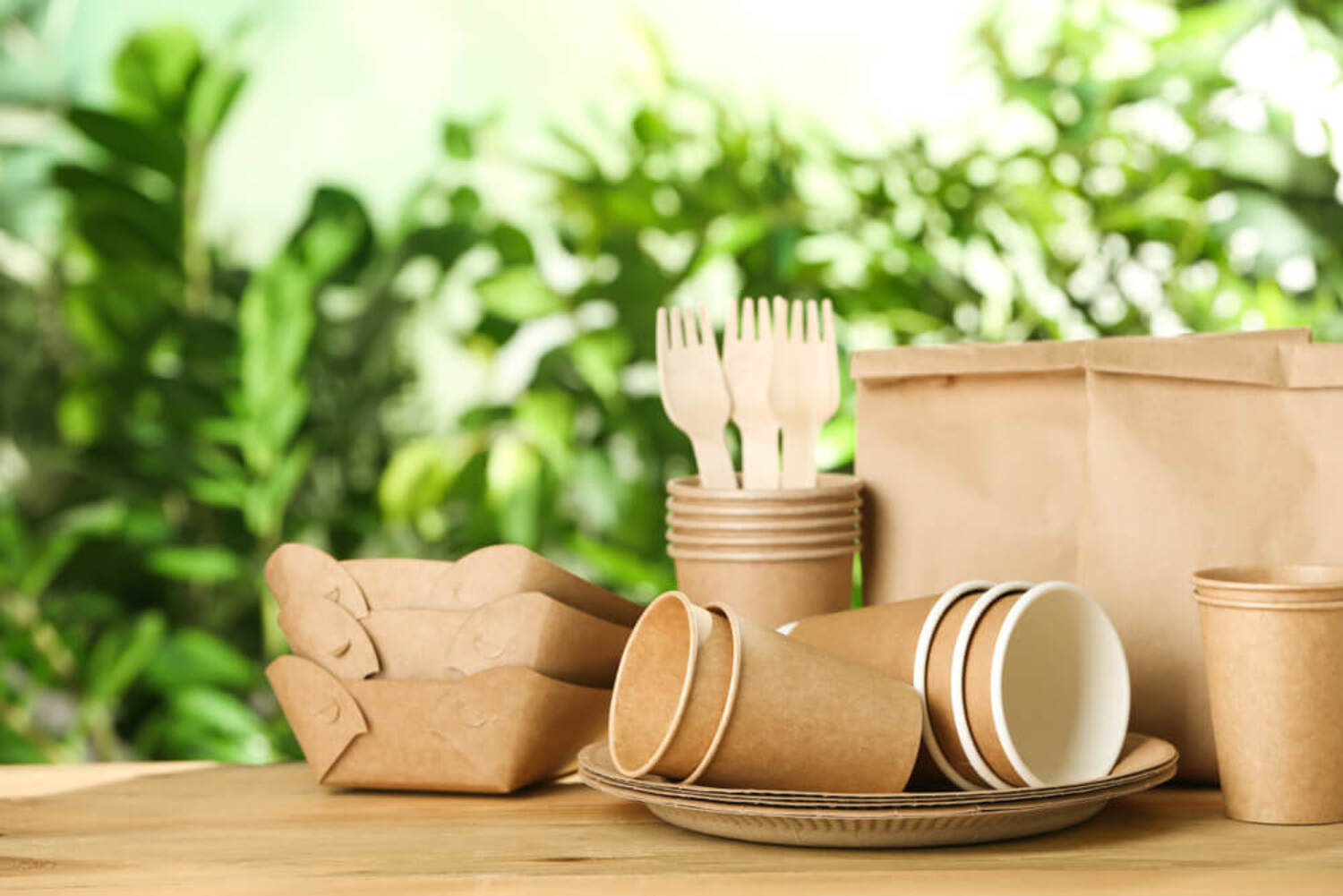
Green Packaging Becomes Mainstream
People have long considered plastic packaging the standard one. However, as the situation of our planet and concerns over the environment have increased over the past years, more and more people have become aware of the fact that plastic might not be such a good idea. This is also why governments have begun putting bans on the usage of plastic bags, and retailers are now trying to go green more than ever before.
A recently-conducted survey says that more than half of American consumers would choose these environment-friendly products over the traditional ones. So, the desire is there and there’s absolutely no reason for manufacturers to wait for change. This is the reason why many businesses today are flirting with this idea of green packaging and they’re being successful at it. Eco-friendly package, according to the current standards, should always:
- Have recycled materials in its composition;
- Be as small as possible in order to reduce the footprint;
- Be recyclable and easily disposable in a sustainable manner.
For most companies, paper in the form of folding cartons is the best solution for packages. It is easy to maneuver, lightweight, sturdy, customizable, efficient, and sustainable. It also doesn’t cost a lot and can be made out of recycled materials.
The Problem with Compostable Packaging
Compostable items, despite the many positive effects they have on the environment, suffer from a significant drawback. In order to be broken down correctly, they need to be done so in an industrial setting that makes use of heat. This procedure takes roughly three quarters of a year on average, but it almost never takes place since the objects seldom make it into the recycling bin. The more significant issue is that facilities for composting are often located in major cities, making it difficult for certain people to have access to them. Because of this, the efficiency and sustainability level of compostable packaging is significantly reduced, and the qualities of the compostable packages are rendered worthless when they are thrown away.
Characteristics of Biodegradable Packaging
On the other hand, when it comes to packaging with compostable bags, things are a lot easier. Microorganisms like bacteria and fungi broke down these materials, and they do it quite easily too. Also, the biggest difference between biodegradable products and other sustainable ones is that they don’t require any specific industry regulations or standards. In fact, everything is biodegradable, even if it takes a few months or a few centuries. This is the reason why so many manufacturers are misleading consumers and overexaggerating these products’ characteristics under what’s known as “greenwashing”. So, in order to avoid this, the Federal Trade Commission has established the Green Guidelines that offer more details on what should be called biodegradable and what not.
The Idea Behind Recyclable Packaging
Recyclable packaging is also dubbed the eco-friendliest option out of them all because basically, you can reuse the material for the same purpose. You can also remanufacture it into something completely new. Still, there are some things that one should know about recycling. First, you need to be willing to recycle that material and take it to a recycling center. Then, that specific center must be able to actually recycle the respective material. Lastly, a product cannot be recycled if it contains food contamination. Recycled material is nowadays used more and more by a lot of companies because it’s efficient, looks nice, and it’s an overall better option for the planet.
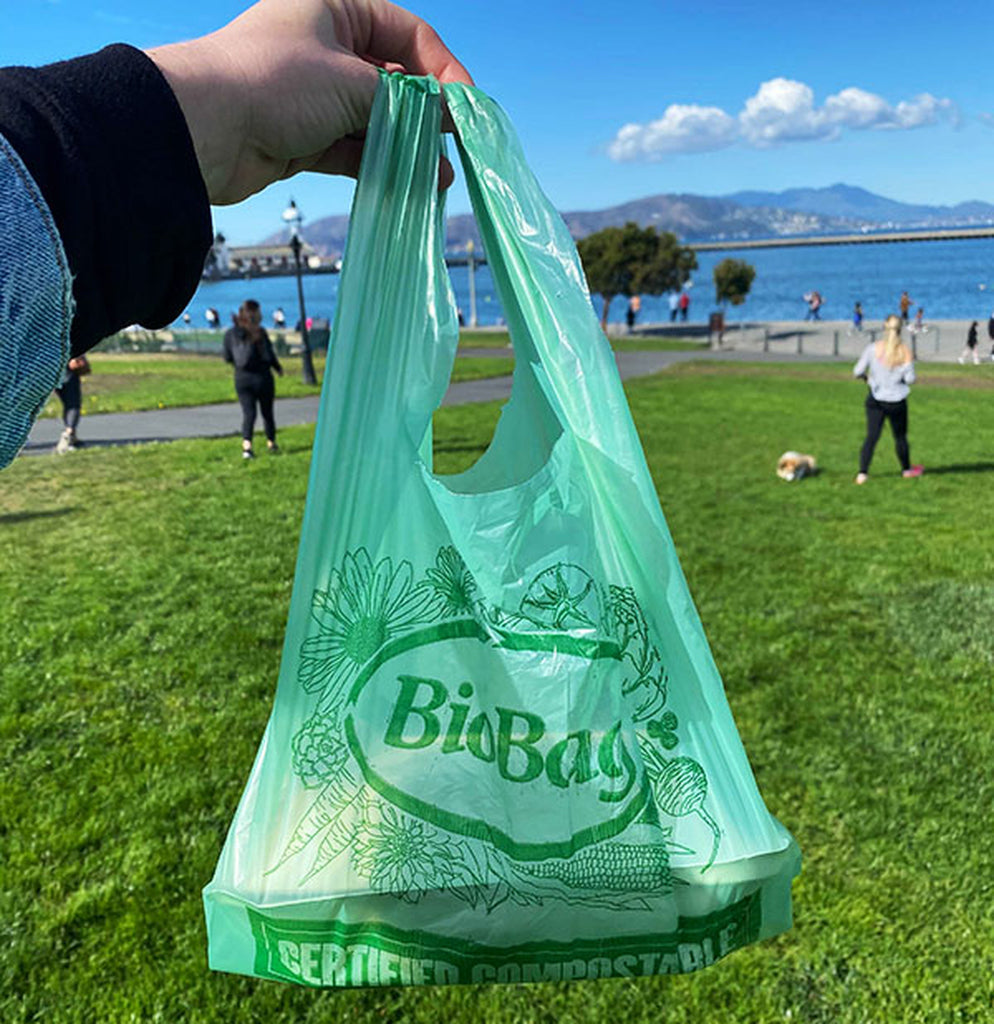
Conclusion
In general, it would seem that people are beginning to become aware of the harmful impacts that conventional plastic packaging has on the environment and are attempting to take action in order to put a stop to these consequences. Ingenious concepts such as biodegradable garbage bags, recyclable, compostable, and even edible packaging are being developed by manufacturers at the same time that corporations are doing all in their power to bring these concepts to the general market. Because they have the potential to contribute to the preservation of the world, non-plastic alternatives to plastic packaging should be used wherever possible. It's possible that it's already too late, but our combined efforts are not going to waste in any way, and they will most definitely give mankind some time to figure out what to do next.